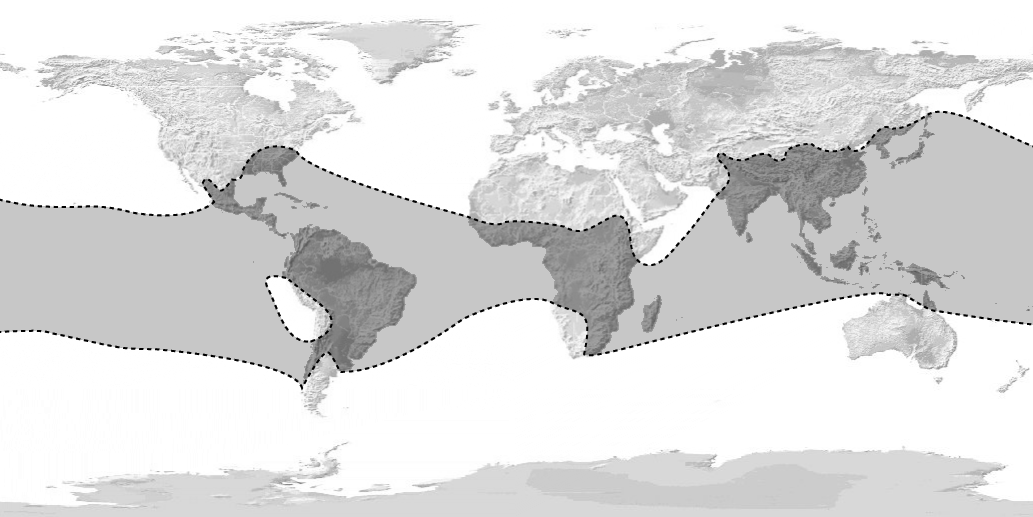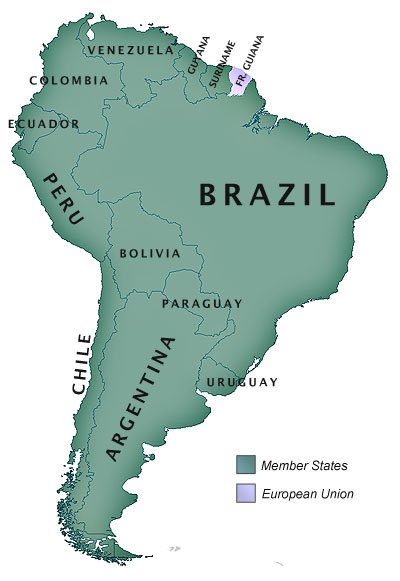|
Mautam
''Mautâm'' () is a cyclic ecological phenomenon that occurs every 48–50 years in the northeastern Indian states of Tripura, Mizoram and Manipur, as well as in many places of Assam which are 30% covered by wild bamboo forests, and Chin State in Myanmar, particularly Hakha, Thantlang, Falam, Paletwa and Matupi Townships. It begins with a rat population boom, which in turn creates a widespread famine in those areas. During ''mautâm'', '' Melocanna baccifera'', a species of bamboo, flowers at one time across a wide area. This event is followed invariably by a plague of black rats in what is called a rat flood. The bamboo flowering brings a temporary windfall of seeds, and rats multiply, exhaust the bamboo seeds, leave the forests, forage on stored grain, and cause devastating famine.. Regular rodent outbreaks associated with bamboo flowering (and subsequent fruiting and seeding) also occur in the nearby Indian states of Arunachal Pradesh, Assam, Manipur, and Nagaland, as wel ... [...More Info...] [...Related Items...] OR: [Wikipedia] [Google] [Baidu] [Amazon] |
Mizoram
Mizoram is a states and union territories of India, state in northeastern India, with Aizawl as its Capital city, capital and largest city. It shares 722-kilometres (449 miles) of international borders with Bangladesh to the west, and Myanmar to the east and south, with domestic borders with the Indian states of Assam, Manipur, and Tripura. It covers an area of 21,087 square kilometres (8,139 sq mi). 91% of the area is covered by forests, making it Forest cover by state in India, the most heavily forested state in India. With an estimated population of 1.25 million in 2023, it is the List of states in India by past population, second least populated state in India. With an urbanisation rate of 51.5% it is the Urbanization in India, most urbanised state in northeast India, ranking fifth in urbanisation nationwide. One of the two official languages and most widely spoken tongue is Mizo language, Mizo, which serves as a lingua franca among various ethnic communities who speak a var ... [...More Info...] [...Related Items...] OR: [Wikipedia] [Google] [Baidu] [Amazon] |
Melocanna Baccifera
''Melocanna baccifera'' is one of two bamboo species belonging to the '' Melocanna'' genus. It grows up to 10–25 m tall. It is native to Bangladesh, Myanmar, India, and Thailand. Habit It is tall, small-culmed bamboo with greenish young culms and straw-colored old culms. It grows in clumps composed of many well-spaced culms. It has a dense appearance due to its branching habit. Description Culms are greenish when young, but becomes straw-colored when mature or brownish green when drying. Young culms are covered with stiff, silver hairs. A white bloom occurs just below the nodes. Young shoots are yellowish brown. The culms are straight; branching occurs from the base, and branches are many, short, loose, and open. Internode length is 25–50 cm, and diameter is 1.5–15 cm. Culm walls are thin. Nodes are prominent. Culm sheaths are greenish in young plants, and turn brown when mature. The sheath proper is 7–15 cm long and 2.5–15 cm wide. Blade length is ... [...More Info...] [...Related Items...] OR: [Wikipedia] [Google] [Baidu] [Amazon] |
Bamboo
Bamboos are a diverse group of mostly evergreen perennial plant, perennial flowering plants making up the subfamily (biology), subfamily Bambusoideae of the grass family Poaceae. Giant bamboos are the largest members of the grass family, in the case of ''Dendrocalamus sinicus'' having individual stalks (Culm (botany), culms) reaching a length of , up to in thickness and a weight of up to . The internodes of bamboos can also be of great length. ''Kinabaluchloa, Kinabaluchloa wrayi'' has internodes up to in length. and ''Arthrostylidium schomburgkii'' has internodes up to in length, exceeded in length only by Cyperus papyrus, papyrus. By contrast, the stalks of the tiny bamboo Raddiella, ''Raddiella vanessiae'' of the savannas of French Guiana measure only in length by about in width. The origin of the word "bamboo" is uncertain, but it most likely comes from the Dutch language, Dutch or Portuguese language, Portuguese language, which originally borrowed it from Malay langua ... [...More Info...] [...Related Items...] OR: [Wikipedia] [Google] [Baidu] [Amazon] |
Madagascar
Madagascar, officially the Republic of Madagascar, is an island country that includes the island of Madagascar and numerous smaller peripheral islands. Lying off the southeastern coast of Africa, it is the world's List of islands by area, fourth largest island, the List of island countries, second-largest island country, and the List of countries and dependencies by area, 46th largest country overall. Its capital and List of cities in Madagascar, largest city is Antananarivo. Following the prehistoric breakup of the supercontinent Gondwana, Madagascar split from Africa during the Early Jurassic period, around 180 million years ago, and separated from the Indian subcontinent approximately 90 million years ago. This isolation allowed native plants and animals to evolve in relative seclusion; as a result, Madagascar is a biodiversity hotspot and one of the world's 17 megadiverse countries, with over 90% of its wildlife of Madagascar, wildlife being endemic. The island has ... [...More Info...] [...Related Items...] OR: [Wikipedia] [Google] [Baidu] [Amazon] |
Nagaland
Nagaland () is a States and union territories of India, state in the northeast India, north-eastern region of India. It is bordered by the Indian states of Arunachal Pradesh to the north, Assam to the west, Manipur to the south, and the Naga Self-Administered Zone of the Sagaing Region of Myanmar, Myanmar (Burma) to the east. Its capital city is Kohima and its largest city is the twin Chümoukedima–Dimapur. The state has an area of with a population of 1,980,602 as per the 2011 Census of India, making it one of the least populated states in India.Census of India 2011 Govt of India Nagaland consists of 17 administrative districts, inhabited by 17 major tribes along with other sub-tribes. Each tribe is distinct in character from the other in terms of customs, language and dress. It is ... [...More Info...] [...Related Items...] OR: [Wikipedia] [Google] [Baidu] [Amazon] |
Australia
Australia, officially the Commonwealth of Australia, is a country comprising mainland Australia, the mainland of the Australia (continent), Australian continent, the island of Tasmania and list of islands of Australia, numerous smaller islands. It has a total area of , making it the list of countries and dependencies by area, sixth-largest country in the world and the largest in Oceania. Australia is the world's flattest and driest inhabited continent. It is a megadiverse countries, megadiverse country, and its size gives it a wide variety of landscapes and Climate of Australia, climates including deserts of Australia, deserts in the Outback, interior and forests of Australia, tropical rainforests along the Eastern states of Australia, coast. The ancestors of Aboriginal Australians began arriving from south-east Asia 50,000 to 65,000 years ago, during the Last Glacial Period, last glacial period. By the time of British settlement, Aboriginal Australians spoke 250 distinct l ... [...More Info...] [...Related Items...] OR: [Wikipedia] [Google] [Baidu] [Amazon] |
Laos
Laos, officially the Lao People's Democratic Republic (LPDR), is the only landlocked country in Southeast Asia. It is bordered by Myanmar and China to the northwest, Vietnam to the east, Cambodia to the southeast, and Thailand to the west and southwest. The country has a population of approximately eight million. Its Capital city, capital and most populous city is Vientiane. The country is characterized by mountainous terrain, Buddhist temples, including the UNESCO's World Heritage Site of Luang Prabang, and French colonial architecture. The country traces its historic and cultural identity to Lan Xang, a kingdom which existed from the 13th to 18th centuries. Through its location, the kingdom was a hub for overland trade. In 1707, Lan Xang split into three kingdoms: Kingdom of Luang Phrabang, Luang Prabang, Kingdom of Vientiane, Vientiane, and Kingdom of Champasak, Champasak. In 1893, these kingdoms were unified under French protection as part of French Indochina. Laos was und ... [...More Info...] [...Related Items...] OR: [Wikipedia] [Google] [Baidu] [Amazon] |
Japan
Japan is an island country in East Asia. Located in the Pacific Ocean off the northeast coast of the Asia, Asian mainland, it is bordered on the west by the Sea of Japan and extends from the Sea of Okhotsk in the north to the East China Sea in the south. The Japanese archipelago consists of four major islands—Hokkaido, Honshu, Shikoku, and Kyushu—and List of islands of Japan, thousands of smaller islands, covering . Japan has a population of over 123 million as of 2025, making it the List of countries and dependencies by population, eleventh-most populous country. The capital of Japan and List of cities in Japan, its largest city is Tokyo; the Greater Tokyo Area is the List of largest cities, largest metropolitan area in the world, with more than 37 million inhabitants as of 2024. Japan is divided into 47 Prefectures of Japan, administrative prefectures and List of regions of Japan, eight traditional regions. About three-quarters of Geography of Japan, the countr ... [...More Info...] [...Related Items...] OR: [Wikipedia] [Google] [Baidu] [Amazon] |
Bambusa Tulda
''Bambusa tulda'', or Indian timber bamboo (alternatively spineless Indian bamboo or Bengal bamboo), is considered to be one of the most useful of bamboo species. It is native to the Indian subcontinent, Indochina, Tibet, and Yunnan, and naturalized in Iraq, Puerto Rico, and parts of South America. ''B. tulda'' is used extensively by the paper pulp Pulp is a fibrous lignocellulosic material prepared by chemically, semi-chemically, or mechanically isolating the cellulosic fibers of wood, fiber crops, waste paper, or rags. Mixed with water and other chemicals or plant-based additives, pul ... industry in India. It can grow to a height of 15 m and a thickness of 8 cm. The single most important fact about Bambusa tulda is its incredible tensile strength; up to 60,000 pounds (27,000 Kg) per square inch. It is commonly found in southeastern Asia. [...More Info...] [...Related Items...] OR: [Wikipedia] [Google] [Baidu] [Amazon] |
South America
South America is a continent entirely in the Western Hemisphere and mostly in the Southern Hemisphere, with a considerably smaller portion in the Northern Hemisphere. It can also be described as the southern Subregion#Americas, subregion of the Americas. South America is bordered on the west by the Pacific Ocean, on the north and east by the Atlantic Ocean, and to the south by the Drake Passage; North America and the Caribbean Sea lie to the northwest. The continent includes twelve sovereign states: Argentina, Bolivia, Brazil, Chile, Colombia, Ecuador, Guyana, Paraguay, Peru, Suriname, Uruguay, and Venezuela; two dependent territory, dependent territories: the Falkland Islands and South Georgia and the South Sandwich Islands; and one administrative division, internal territory: French Guiana. The Dutch Caribbean ABC islands (Leeward Antilles), ABC islands (Aruba, Bonaire, and Curaçao) and Trinidad and Tobago are geologically located on the South-American continental shel ... [...More Info...] [...Related Items...] OR: [Wikipedia] [Google] [Baidu] [Amazon] |
Famine
A famine is a widespread scarcity of food caused by several possible factors, including, but not limited to war, natural disasters, crop failure, widespread poverty, an Financial crisis, economic catastrophe or government policies. This phenomenon is usually accompanied or followed by regional malnutrition, starvation, epidemic, and increased death, mortality. Every inhabited continent in the world has experienced a period of famine throughout history. During the 19th and 20th centuries, Southeast Asia, Southeast and South Asia, as well as Eastern Europe, Eastern and Central Europe, suffered the greatest number of fatalities due to famine. Deaths caused by famine declined sharply beginning in the 1970s, with numbers falling further since 2000. Since 2010, Africa has been the most affected continent in the world by famine. As of 2025, Haiti and Afghanistan are the two states with the most catastrophic and widespread states of famine, followed by Palestine (confined to Gaza Strip ... [...More Info...] [...Related Items...] OR: [Wikipedia] [Google] [Baidu] [Amazon] |





